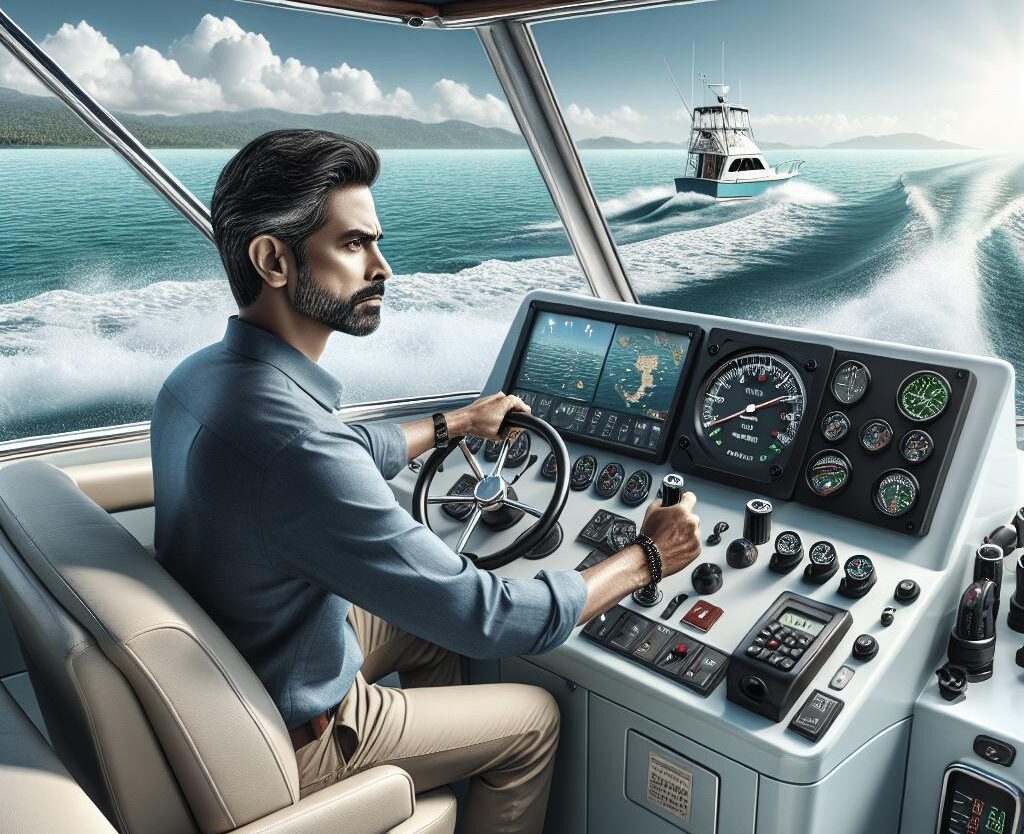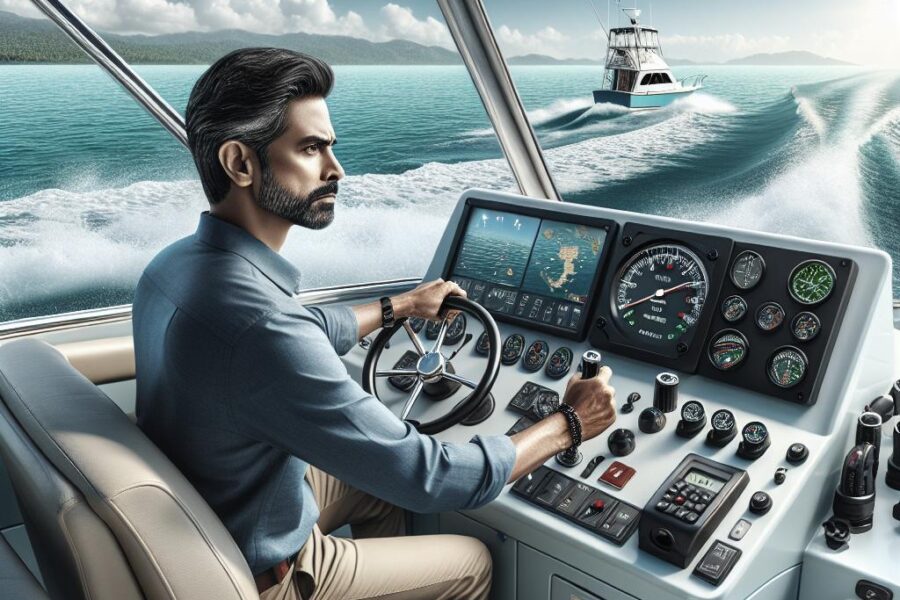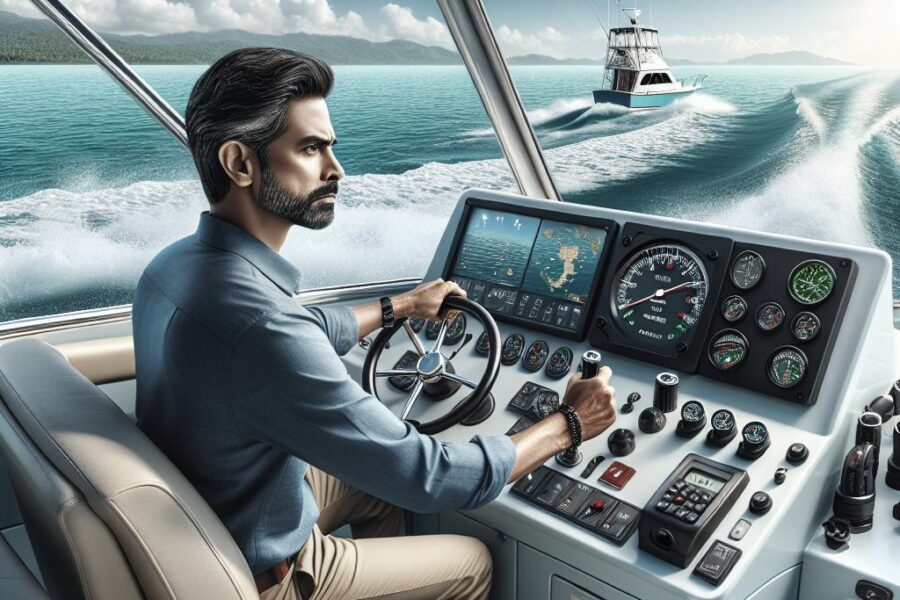How to Drive a Boat: A Comprehensive Guide for Beginners
Dreaming of cruising across the open waters, feeling the wind in your hair, and leaving the worries of the world behind? Learning how to drive a boat can transform this dream into reality. This guide walks you through the essentials, from understanding the basics to mastering nuanced techniques like throttle control and trimming a boat. We’ll talk about the importance of the safety shut-off switch, how to navigate effectively, and the art of speed adjustment. Let’s dive into the thrilling journey of acquiring boating skills and becoming a proficient captain on the water.
Guiding a Boat: The Basics
Before setting sail, it’s crucial to have a good grip on the fundamentals of steering a vessel. This begins with understanding how the boat’s steering system operates. Most modern boats come equipped with a wheel that functions similarly to a car’s steering wheel. Turning the wheel to the right steers the bow—or front—of the boat to the right, and the same goes for the left. This counterintuitive action might take some getting used to, but practice makes perfect.
Familiarizing yourself with the boat’s controls is equally important. An essential control is the throttle and shift lever. The throttle governs your speed, while the lever allows you to switch between neutral, forward, and reverse. Note that boats don’t have brakes, so forward planning is necessary to stop or slow down. Remember, safety is paramount, so always keep an eye on the surroundings while on the wheel.
Orientation on water is another foundational aspect. Unlike driving on roads, there are no lanes on the water, and the surface is constantly changing. Markers, buoys, and nautical charts are your allies for navigation. It’s wise to study these navigational aids diligently before embarking on your voyage. Keeping these basics in mind ensures you maintain control and steer safely through various boating conditions.
Initiating a Boat’s Journey
Safety Shut-off Switch or “Kill Switch”
The safety shut-off switch, commonly referred to as the “kill switch,” is a critical safety feature to understand when starting your boating journey. This device is designed to halt the engine instantly if you accidentally fall overboard. Attached to a lanyard, this switch ensures that the boat doesn’t continue on a potentially perilous journey without you at the helm.
To use it effectively, always ensure the lanyard is attached to your wrist, life jacket, or clothing. This simple act can prevent mishaps. In the unfortunate event of an accident where you’re ejected from the boat, the lanyard disengages from the switch, cutting the engine immediately. This precaution protects not only you but also others on board as it stops the boat in its tracks.
Despite the importance of the kill switch, many newcomers overlook this feature. However, it’s a non-negotiable aspect of responsible boating. Make it a habit to check the kill switch’s condition regularly and replace it as needed. It’s an essential aspect of boat safety that sets you on the right path before you even hit the water.
Speed Control Lever
Integral to the boating experience is understanding the speed control lever, which plays a pivotal role in managing your vessel’s velocity. Typically found in the cockpit, it often comes as a single hand-operated unit or two separate levers. Knowing how to manipulate these levers with confidence is key to a smooth voyage.
The right maneuvering starts by pushing the throttle forward slowly to accelerate, while pulling it back to decelerate. The speed control lever’s sensitivity can vary across different boats, so becoming familiar with your specific setup is vital. Spend time experimenting with various speeds to gauge how your boat responds to commands.
Misusing the speed control can lead to sudden jerks, making the ride uncomfortable or even dangerous. The learning curve involves managing the throttle with finesse to maintain safety and ensure an enjoyable journey for all passengers. Taking the time to master speed control will immensely benefit your overall boating skills.
Using the Boat’s Throttle Effectively
The throttle is your main mechanism for regulating a boat’s speed and requires precision for effective handling. Begin with gentle movements as abrupt changes can unsettle the vessel, leading to instability and potential hazards. Practice incremental adjustments; this gives you ample time to assess the boat’s reaction and adjust accordingly.
When stationed at a dock or marina, cautious throttle management is crucial. Maneuvering in tight spaces calls for skillful handling to avoid collisions with other boats or structures. Smoothly transition between gears and watch as your confidence grows with every careful throttle tweak.
For leisurely cruising on open waters, the throttle can be your best friend. Gradually opening up the throttle allows the boat to plane effectively, striking a balance between speed and fuel efficiency. By honing this skill, you’ll gain greater control and a more enjoyable time on the water.
Navigating a Boat
Navigating a boat introduces a new dimension of maritime adventure. Unlike road navigation, boating requires you to rely on compass directions, buoys, and nautical charts. A firm grasp of these elements is indispensable for a seamless journey. Start by familiarizing yourself with basic navigation symbols and chart-reading techniques.
Technology offers significant aid with the advent of GPS systems designed for boats. These devices can guide you through uncharted waters and ensure you’re on the right path. However, don’t let technology eclipse traditional navigation skills—they’re invaluable, particularly when technology falters or is unavailable.
Maintaining awareness of your surroundings is paramount. Know the direction the boat is facing and keep a tab on weather updates. Nearby vessels, floating debris, and sudden weather changes can pose challenges. Practicing situational awareness can prepare you for unexpected situations, ensuring a safe and enjoyable expedition.
Reducing Boat Speed
Slow and steady wins not just the race but also ensures safe boating. Learning to reduce speed effectively is essential, especially in crowded areas like docks and marinas. Lowering your speed gradually helps maintain control and focus, giving you the ability to react to sudden changes in the environment.
The key to smooth deceleration is a well-coordinated use of the throttle and shift lever. Pull back on the throttle gently to reduce speed and prepare to engage the shift lever into neutral if needed. Practice this technique until it becomes second nature for you.
Bear in mind, boats don’t come equipped with brakes. Therefore, always anticipate a slower response than what you’re used to in vehicles on land. This anticipation will inform your approach when encountering navigational markers or other watercraft, helping you execute flawless and safe maneuvers.
Adjusting the Boat’s Trim
Adjusting the boat’s trim is an art that can improve performance and efficiency. Trim refers to the angle of the boat while moving in water and controlling it can make a noticeable difference in your boating experience. Utilize trim tabs or tilt switches to adjust the angle and optimize performance.
The right trim can help the boat glide smoothly, improving fuel consumption and reducing wear on the engine. Learning when and how to adjust trim according to water conditions and speed is pivotal. Pay attention to how the boat reacts and make incremental adjustments as needed.
Think of adjusting the boat trim as finding a balance point where everything feels just right. By mastering this, you enhance the ride comfort for you and your passengers, while also maintaining a responsible approach to fuel use and overall boat handling.
Final Thoughts: Practice Leads to Mastery!
Boating is akin to a journey in itself—full of learning and exhilarating experiences. Continuous practice will enable you to perfect your skills and become a capable and confident boater. Remember, every outing is an opportunity to refine your techniques and learn from your surroundings.
Engage in regular practice sessions, preferably with an experienced boater if you’re just starting out. Make mistakes and learn from them. With time, the intricate controls and nuances of navigation will become second nature to you. Most importantly, enjoy the process and embrace the serene beauty that boating offers.
Ultimately, your dedication and passion will chart your course towards mastery. Safe boating is informed, patient, and respectful of both the elements and fellow boaters. Embrace every outing with enthusiasm, and the open waters will become your playground.
FAQ
Is a boat easy to drive?
Driving a boat varies in difficulty based on its type and the water conditions. Small boats can be relatively easy for beginners, while larger vessels or sailing boats require more skill and experience. Proper training and practice are recommended for safe and confident operation.
How do you drive your boat?
To drive a boat, start by turning the ignition to start the engine. Use the throttle to control speed and the steering wheel or tiller to navigate. Always be aware of your surroundings and follow maritime rules and signals.
What qualifications do you need to drive a boat?
You typically need a boating license or safety certificate, which requires passing a course recognized by your local maritime authority. Age requirements and specific qualifications can vary depending on the boat’s size and your location. Additionally, some boats may require specialized licenses or endorsements.
How do you start a boat for beginners?
To start a boat, ensure all necessary safety checks are complete, then insert the key into the ignition and turn it to start the engine. If it’s an outboard or inboard engine, you may need to ensure the throttle is in neutral. Always consult the boat’s manual for specific instructions related to the make and model.
Future Perspectives
| Topic | Description |
|---|---|
| Guiding a Boat: The Basics | Fundamentals of steering, throttle use, and water orientation. |
| Initiating a Boat’s Journey | How to use the safety shut-off switch and speed control lever. |
| Using the Boat’s Throttle Effectively | Techniques for smooth speed regulation and control. |
| Navigating a Boat | Basics of maritime navigation, including map reading and GPS usage. |
| Reducing Boat Speed | Strategies for safe deceleration and maneuvering in tight spots. |
| Adjusting the Boat’s Trim | Trim manipulation for optimized performance and fuel efficiency. |
| Final Thoughts: Practice Leads to Mastery! | Encouragement for ongoing learning and embracing new challenges. |





